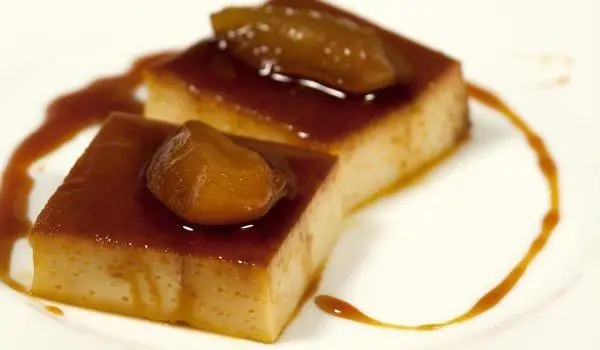2025 Author: Jasmine Walkman | [email protected]. Last modified: 2025-01-23 10:18
Fructose is a monosaccharide that the human body can use for energy. It is also called fruit sugar because it is mainly found in fruits. It is absorbed twice as slowly as glucose and does not require insulin, so it can be consumed by diabetics. The muscles cannot use it directly and it is processed first by the liver.
The main sources of fructose in nature are honey and fruits. Unfortunately, in our time they are not its main source.
Today, when refined carbohydrate foods lurk everywhere, fructose does not enter the body from natural sources. It is not obtained from sugar (which has 50% fructose). It is obtained from the so-called glucose-fructose syrup - High fructose corn syrup / HFCS /.
A silent revolution began in the food and beverage industry in the 1980s. Manufacturers are gradually beginning to replace sugar in products with glucose-fructose syrup. In 1970, more than 80% of the sweeteners consumed in the United States were sugar.
Use of glucose-fructose syrup

Glucose-fructose syrup is obtained by a process of enzymatic hydrolysis of corn starch and is very rich in fructose. It is a caloric sweetener that is used to enhance the sweetness of many drinks and foods.
Because it is about 75% sweeter than sugar, cheaper and more durable, glucose-fructose syrup is used in many foods and beverages. In addition to the syrup's ability to increase the shelf life of products, it mixes much more easily with liquids and retains its sweetness better than sugar.
There are several types of syrup, but the most commonly used in the food industry are HFCS 42 and HFCS 55. The former contains about 42% fructose and is used to make confectionery, and the latter is 55% fructose and is used to make soft drinks.
Glucose-fructose syrup helps to brown the pastries, which is why it is used in various types of cakes, pastries, cereal biscuits, biscuits, etc. Practically today glucose-fructose syrup contained in all processed foods and beverages - from cola to cornflakes and other cereals, white bread, fruit juices, ice cream, cakes, soups and more.
Harm from glucose-fructose syrup
Table sugar has been declared a white poison and its consumption has decreased significantly in recent years. On the other hand, the consumption of fructose in the form of glucose-fructose syrup has increased by more than 2.5 times. It should be known that this is dangerous because excessive consumption of fructose significantly endangers health.
The small amounts of fructose that are consumed daily from honey or fruit will not harm your health. The problem starts when the daily amount starts to exceed 10% of the total caloric intake.
In large quantities glucose-fructose syrup not only is it not dietary, but it is also dangerous to health. The main reason is that in order to use fructose as fuel for the muscles, it must first pass for processing through the liver.

Its ability to cope with this task is not so great, and when fructose enters in larger quantities, it is processed into fats, which increase the level of triglycerides in the blood. High triglyceride levels increase the risk of developing cardiovascular problems, insulin resistance and diabetes.
There is almost no difference in the molecule structure of natural fructose, glucose-fructose syrup and sugar. There is a difference in the amounts, the time for absorption by the body and the content of other ingredients.
Although glucose-fructose syrup and sugar contain approximately the same amounts of fructose, they are not quite the same. Fructose from the syrup is absorbed much faster. It is a misconception that glucose-fructose syrup is more natural and safer.
The main difference between the natural sources of fructose, sugar and glucose-fructose syrup is that the latter provide the body with only empty calories. They do not provide minerals, vitamins or other valuable ingredients - only sugar.
Recommended:
Glucose

Glucose is a monosaccharide from the group of carbohydrates, which dissolves in water and has a sweet taste. Glucose has its sweet taste due to 5 hydroxyl groups. Apart from being sweet, the substance is colorless and crystalline. It is also characterized by the fermentation process, as a result of which organic substances decompose into simpler compounds under the action of various enzyme enzymes.
How To Make Sugar Syrup For Cakes

Many pastries and cakes require the filling of marshmallows with sugar syrup. The basic rule is that one of the two must be cold - either the marsh or the syrup. A better option is to leave the syrup to cool to room temperature and pour it over the marsh, which has remained for at least four hours after baking.
Maple Syrup

Maple syrup is a 100% alternative to sugar, which can be safely used by people suffering from diabetes. Although unpopular in our country, maple syrup is considered one of the healthiest natural products that can bring many benefits to human health.
Culinary Textbook: Rules For Making Homemade Syrup

Many of us remember with nostalgia those times when one of the most delicious drinks in our childhood was home-made syrup or juice, made with real skill by our grandmothers or mothers. This is especially true for those of us who have had the good fortune to spend our summer holidays in our villages or villas, where syrups and juices are made with home-grown fruit, not the ones we see in the markets today, and despite their perfect appearance we never know with what chemica
Glucose-rich Vegetables

The most important of all monosaccharides is glucose. It is a basic unit in the structure of most nutrients from the group of saccharides. In metabolism, they break down and convert into other substances used by the body as energy. Fruit sugar, as it is also called glucose , participates in metabolism.

